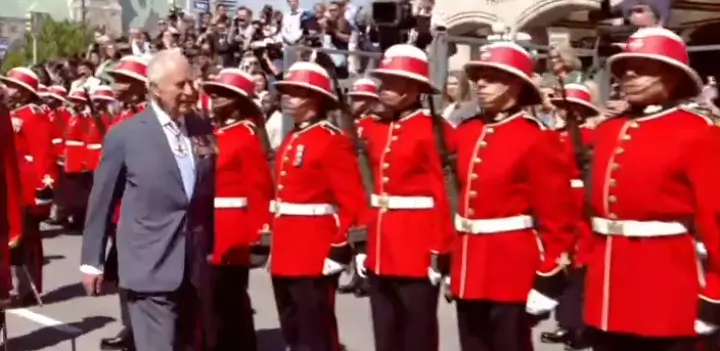King Charles Opens Canadian Parliament with Bold Message of Sovereignty and Unity
In a rare and symbolic move, King Charles delivered Canada’s throne speech in Ottawa on Tuesday, setting the tone for Prime Minister Mark Carney’s new administration while delivering an unmistakable message of sovereignty aimed at its southern neighbour.
This marks the first time in nearly 50 years that a reigning monarch has opened Canada’s Parliament, and the timing couldn’t be more strategic. The Liberals, under newly elected Carney, are navigating heightened tensions with the U.S. following repeated jabs from President Donald Trump questioning Canada’s autonomy.
Here are five key takeaways from the landmark address:
—
1. A Royal Signal to Washington: Canada Stands Independent
While never naming Trump directly, King Charles’s remarks were laced with patriotic resolve in the face of U.S. pressure. He acknowledged the evolving nature of international partnerships and emphasized Canada’s independence.
“The Crown has for so long been a symbol of unity for Canada,” the King said. “It also represents stability and continuity… As it should, it stands proudly as a symbol of Canada today, in all her richness and dynamism.”
Opening with a reference to “pleasure and pride” in witnessing Canadians’ unity, Charles concluded with a flourish, invoking the national anthem: “The True North is indeed strong and free!”
His personal appearance—a role typically reserved for Canada’s Governor General—was widely interpreted as a deliberate show of solidarity with Canada’s sovereignty and identity.
2. Canada’s Role in a Shifting Global Landscape
Charles painted a picture of a world in flux, describing “unprecedented challenges” and shifting global trade dynamics. He warned that the system of open trade that long benefited Canada was changing, and so too must its alliances.
“Canada’s relationships with partners are also changing,” he noted, in a subtle nod to the strain with the U.S.
The message echoed Carney’s campaign narrative that the country stands at a crossroads—and must seize this moment to shape its future.
—
3. A Vision for Economic Transformation
Domestically, the throne speech outlined a sweeping economic agenda. Central to that was a pledge to supercharge national infrastructure development and promote indigenous economic participation through expanded lending programs.
The government promised to table legislation by 1 July to dismantle costly interprovincial trade barriers—an issue economists say drains the economy by up to C$200 billion annually.
—
4. Strengthening Old Ties While Facing New Realities
The speech emphasized Canada’s intent to deepen economic and security partnerships with European allies, even as it attempts to recalibrate its relationship with the U.S.
The subtext was clear: while Canada values its historic ties with the United States, it is preparing to assert greater independence in its foreign and economic policy.
—
5. Political Response: Praise and Pushback
While the speech was rich in vision, opposition leaders quickly seized on what they called a lack of concrete detail. Conservative leader Pierre Poilievre criticized the speech for lacking “specific plans” on major issues, particularly energy development.
Nonetheless, the throne speech marked a moment of national introspection—and a call to bold action.
—
With King Charles setting a regal tone for the new legislative session, Prime Minister Carney’s government now faces the challenge of turning lofty ambitions into tangible progress. The throne speech, both a message to Canadians and a signal to the world, made one thing clear: Canada intends to chart its own course, strong and free.



